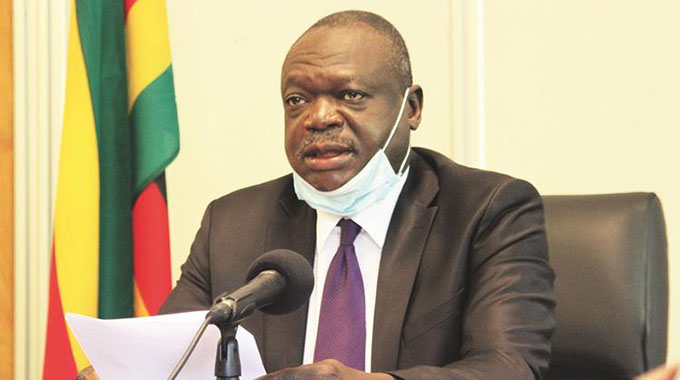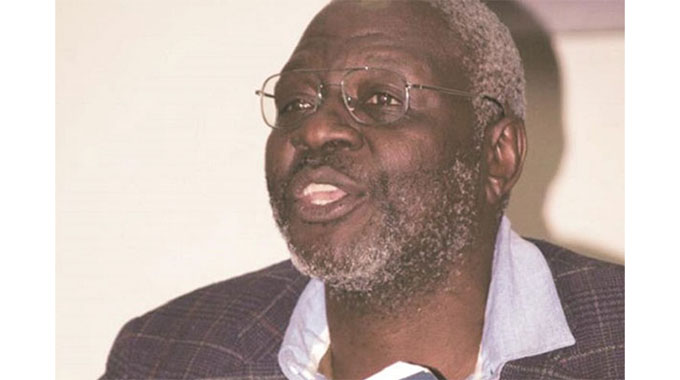Mbuya Nehanda statue demystified

Sifelani Tsiko Agric, Environment & Innovations Editor
Nehanda Charwe Nyakasikana, who is popularly known as Mbuya Nehanda, was a powerful spirit medium and heroine of the 1896 -87 First Chimurenga war against British settler colonialism. She is one of the greatest African female heroines of our time who shaped and influenced the early African liberation struggle against colonialism.
In this report, Sifelani Tsiko (ST), our Agric, Environment & Innovations Editor speaks to National Museums and Monuments of Zimbabwe executive director Dr Godfrey Mahachi (GM) on the construction of the Mbuya Nehanda memorial monument in Harare which is set to act as constant, powerful reminder and towering statement of the powerful and revered Shona mhondoro’s heroic deeds during her time at Shavarunzi Hill before she was later captured at Baradzanwa Hill by the invading colonial settlers.
********
ST: What is the major reason for constructing Mbuya Nehanda’s Memorial Statue in Harare?
GM: Monuments in general and statues in particular are tangible or physical representations of places, people or events that have value and significance to a community, people or a nation. They help people to remember or associate themselves with their past. The past is important because it influences or shapes our present. Monuments are also a source of information and inspiration and are often centres of information, education and recreation.
The statue of Mbuya Nehanda that will soon be mounted at the intersection of Samora Machel Avenue and Julius Nyerere Way will be a monument that reminds us of how our forefathers resisted colonial conquest. Mbuya Nehanda personifies this early resistance. Putting up a statue of Mbuya Nehanda is, therefore, a national celebration of her courage and those who worked with her in a bid to defeat colonial occupation. The monument is a tribute to Mbuya Nehanda and the many other leaders of the First Chimurenga such as Chingaira Makoni, Mapondera, Chinengundu Mashayamombe, Chiwashira and others. Mkwati and Sekuru Kaguvi were the other spiritual leaders of the uprising and their participation in coordinating resistance in various communities is also celebrated in this monument.
ST: Who mooted the idea to erect the statue of Mbuya Nehanda?
GM: For many years, the people of Zimbabwe have observed that whilst a number of monuments to celebrate the Second Chimurenga have been established, there were no similar efforts to showcase the heroic achievements from the First Chimurenga. The need to have a monument of the First Chimurenga was also based on the fact that it is the First Chimurenga that inspired the Second.
One cannot, therefore, talk about the Second Chimurenga without making reference to the First Chimurenga. The Upper Mazowe Valley otherwise more commonly referred to as Gomba from where Mbuya Nehanda operated during the uprisings was declared a national monument in 2007. This was an important step in the direction of officially recognizing the importance of Mbuya Nehanda in our national history, although other initiatives had already been taken by Government such as the renaming of streets and some public institutions.
ST: Could you briefly tell us the whole process that was taken to decide on the erection of the statue.
GM: The process that is being followed as this project is being implemented is highly consultative. Discussions as to where the statue should be located took place and emphasis was placed on the need to be guided in that process by history. It is this history that reminds us that after her capture at Baradzanwa Hill in the Mazowe Valley, Mbuya Nehanda was brought to the then Salisbury for trial.
She was being charged for the murder of a native commissioner who was killed during the uprisings. While the jail at that time was in the general area of the Harare Central Police Station, the court that tried her was at what is now the Reserve Bank of Zimbabwe, a stone’s throw away from the intersection where the statue will be erected. This is significant and meaningful.
Mbuya Nehanda’s “mapfupa angu achamuka” prophecy on being sentenced to hang has come to pass. The statue itself is being crafted guided by a photograph of Mbuya Nehanda that was supplied by the National Archives of Zimbabwe. This is the image of Mbuya Nehanda as most known by Zimbabweans. The artist tasked with its production has to ensure that the statue fully represents the image as seen in the photograph.
In this regard, numerous inspection visits will be conducted during the statue fabrication process, to ensure that the final product is indeed a true likeness of Mbuya Nehanda.
ST: What is the role of the National Archives of Zimbabwe and National Museums and Monuments in the erection of the statue? Which are the other lead Government agencies in this project.
GM: The National Archives of Zimbabwe has important roles to play in the project. Firstly, they supplied the photographs and are also an important source of documentary evidence on the history the project is profiling. National Museums and Monuments of Zimbabwe is, as the national institution mandated to manage the country’s heritage, the client. It, however, must ensure that sufficient information on Mbuya Nehanda and the First Chimurenga is mobilised and packaged for display around the monument. It must also ensure that on completion of the project, the legal framework for the protection of the monument is in place, by having the statue gazetted as a national monument.
The Public Works Department of the Local Government ministry is supervising the whole project while the Department of Roads in the transport ministry concerns itself, alongside the City of Harare with traffic management issues.
ST: Who designed the Mbuya Nehanda memorial statue? Tell us briefly about the designer and his portfolio of works.
GM: Mr David Mutasa is a local artist with demonstrated experience in bronze casting. He was, therefore, tasked with the production of the statue, which will be no less than three metres in height. The statue will be mounted on a 1.5-metre high pedestal to give the statue prominence.
Mr Mutasa has done various bronze art works, locally and abroad. He did a statue of Mbuya Nehanda for the Parliament of Zimbabwe and also made the Zimbabwe Bird sculpture that sits outside the Reserve Bank of Zimbabwe building in Harare. He has produced busts for many prominent personalities including one for Prince Charles of England. Locally, he made busts of Cde Herbert Chitepo and Maurice Nyagumbo, among others.
ST: What is the estimated cost of the Mbuya Nehanda memorial statue? Which are the main financing agencies of the Government? Are there any other corporates, individuals and other funding partners that are supporting the erection of the statue? If yes, tell us what they have contributed.
GM: The project costs are being be sourced from the Ministry of Local Government and Public Works. While at the moment Government is funding the project, efforts to bring in support and sponsorship for some components of the project are on-going. There is public interest in the project, hence the anticipation that the project will attract private sector sponsorship.
ST: What is the timeline for the erection of this memorial statue? What measures are being taken not to disrupt the flow of traffic at this busy intersection in the capital?
GM: It is Government’s wish that the project be completed this August. The Ministry of Transport and the City of Harare are working on a traffic management plan to ease anticipated traffic congestion when construction works become fully operational.
ST: What are some of the challenges you are facing in the implementation of this project? How do you intend to overcome some of these challenges?
GM: Some of the challenges pertain to cost containment in light of the inflationary pressures the economy is facing, whilst the need for the importation of some components of the construction works does retard progress, in some instances. The project area is a busy intersection with numerous underground services and the careful redirection of these at times takes time and this affects overall project implementation progress.
ST: Some government critics argue that the erection of the monument will gobble the much needed resources. What is your comment on this?
GM: The general opinion is that this project is long overdue. Some people argue that a monument of Mbuya Nehanda and the other First Chimurenga heroes should have been done immediately after Zimbabwe attained independence. The adage “better late than never” is relevant here.
It is indeed correct that Zimbabwe, alongside other nations across the globe is currently fighting the Covid-19 pandemic. The fact that we are in this world crisis should not imply that we stop doing that which we must do as a people. There is always tomorrow. We continue to protect the heritage, to restore monuments and, as much as possible, other sectors of our economy have had to continue functioning, albeit under constrained conditions. The need to plan and work for the good of ourselves post Covid-19 is a reality we must acknowledge. Reconstructing and showcasing our past for present and future generations is always a worthwhile and meaningful task.
ST: What is the symbolic significance of this monument to the understanding of Zimbabwe’s past, present and future?
GM: When this country was colonised in 1890 and the British took control of the affairs of this land, one of their preoccupations was the development of monuments in honour of themselves and their ancestors. Places were renamed after their own, statues and other structures in tribute to themselves were made and erected. This was a sign of conquest. The land had become theirs, hence its marking as such through such symbols.
The indigenous owners of the land have repossessed their land. It was once lost. As you affirm your ownership, you symbolise the process by raising high that which tells your story and is of importance and value to you as a people.
The Mbuya Nehanda statue is a strong, but very simple statement to the effect that the Zimbabwe which our forefathers defended by fighting the First Chimurenga was restored. Its back in the hands of the children of Zimbabwe. The statue is also a tribute to those who played defining roles in both the First and Second Chimurenga and, further, its a celebration of the bravery and leadership qualities that the women folk of this country, during the First and Second Chimurenga, practically exhibited.
The statue is indeed a significant construction because it carries different layers of meaning, all of which create a foundation on which peace, mutual understanding and that sense of national identity thrives.










Comments